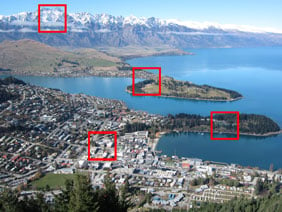Canon IXUS 300 HS / PowerShot SD4000 IS
-
-
Written by Gordon Laing
Quality
Canon IXUS 300 HS / SD4000 IS vs IXUS 210 / SD3500 IS Real-life resolution (default Program settings)
Canon IXUS 300 HS / PowerShot SD4000 IS results : Real-life resolution / High ISO Noise
|
To compare real-life performance we shot the same scene with the Canon IXUS 300 HS / PowerShot SD4000 IS and IXUS 210 / PowerShot SD3500 IS within a few moments of each other using their best quality JPEG settings and lowest sensitivities. The lenses were adjusted to deliver as close a field-of-view as possible. Each camera was set to Program mode without intervention to see how they performed with default settings. |
The image above was taken with the Canon IXUS 300 HS / PowerShot SD4000 IS at 125 ISO with an exposure of 1/800 and the lens set to 6mm f4; the original file measured 2.86MB. As stated above, we allowed each camera to automatically select its own exposure in Program mode, in order to compare how they performed under default settings. Coincidentally both selected f4 allowing a direct comparison, although we later repeated the test with the IXUS 300 HS / PowerShot SD4000 IS in Aperture Priority and found the sample at f2.8 enjoyed fractionally higher contrast and sharpness.
The IXUS 300 HS / SD4000 IS employs a 10 Megapixel CMOS sensor, while the IXUS 210 / SD3500 IS packs in a 14 Megapixel CCD. The lower resolution of the IXUS 300 HS / SD4000 IS is responsible for the larger area in the crops below, but what impact does it have on resolved real-life detail?
Comparing the crops in the second and fourth rows (which feature lots of fine building detail), the IXUS 300 HS / SD4000 IS visibly falls short of what’s captured by the higher resolution IXUS 210 / SD3500 IS. You’ll need to pixel-peep on-screen at 100%, but you’ll certainly notice finer details on the sample taken with the 14 Megapixel model. When printed though, the difference becomes much more subtle.
More obviously though, the first and third rows of crops taken towards the edges of the frame reveal greater softness on the IXUS 300 HS / SD4000 IS image compared to the IXUS 210 / SD3500 IS. Again it’ll be fairly subtle when printed, but pixel-peepers viewing on-screen at 100% will spot the difference.
So as you’d expect given its lower resolution sensor, the IXUS 300 HS / SD4000 IS falls short of the detail resolved by the 14 Megapixel IXUS 210 / SD3500 IS – at least when both cameras are set to their lowest sensitivities. But start increasing the sensitivity and the lower pixel density of the IXUS 300 HS / SD4000 IS should in theory enjoy the edge. Let’s find out if that’s the case in practice in our IXUS 300 HS / SD4000 IS High ISO Noise results, or if you’ve seen enough, head straight to our Verdict.
Canon IXUS 300 HS / PowerShot SD4000 IS |
Canon IXUS 210 / PowerShot SD3500 IS | |
 |  | |
f4, 125 ISO |
f4, 80 ISO | |
 |  | |
f4, 125 ISO |
f4, 80 ISO | |
 | 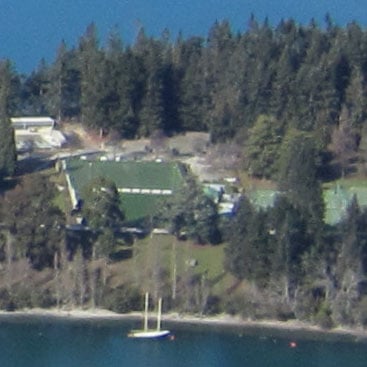 | |
f4, 125 ISO |
f4, 80 ISO | |
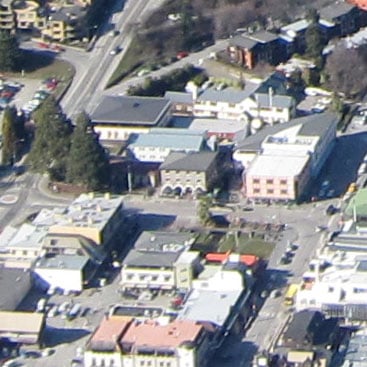 | 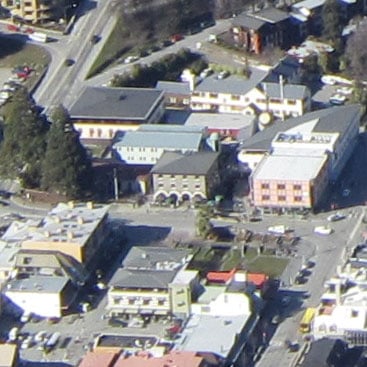 | |
f4, 125 ISO |
f4, 80 ISO |
Canon IXUS 300 HS / SD4000 IS vs IXUS 210 / SD3500 IS High ISO Noise (default Program settings)
Canon IXUS 300 HS / PowerShot SD4000 IS results : Real-life resolution / High ISO Noise
|
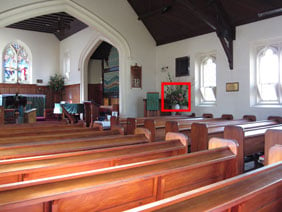 |
To compare noise levels under real-life conditions we shot this scene with the Canon IXUS 300 HS / PowerShot SD4000 IS and IXUS 210 / PowerShot SD3500 IS within a few moments of each other using their best-quality JPEG settings and at each of their ISO settings. The lenses were adjusted to deliver as close a field-of-view as possible. Each camera was set to Program to see how they performed with default settings; i-Contrast was disabled as it can introduce noise. |
The image above was taken with the Canon IXUS 300 HS / PowerShot SD4000 IS at 125 ISO with an exposure of 1/10 and the lens set to 6mm f2.8; the original file measured 2.16MB. As stated above, we allowed each camera to automatically select its own exposure in Program mode, in order to compare how they performed under default settings.
The IXUS 300 HS / SD4000 IS employs a 10 Megapixel CMOS sensor, while the IXUS 210 / SD3500 IS packs in a 14 Megapixel CCD. The lower resolution of the IXUS 300 HS / SD4000 IS is responsible for the larger area in the crops below, but what impact does it have on noise levels and resolved detail in low light?
The IXUS 210 / SD3500 IS kicks-off the sequence at 80 ISO, and while there’s plenty of detail in the crop, there’s also already visible noise textures. Admittedly they’re subtle and wouldn’t affect most prints, but they’ll be obvious to pixel-peepers viewing at 100% and prove packing 14 Megapixels into a small 1 /2.3in sensor is arguably a step too far.
The IXUS 300 HS / SD4000 IS joins in at its lowest sensitivity of 125 ISO, which we’ve compared to 100 ISO on the IXUS 210 / SD3500 IS. Look closely and you’ll spot subtle noise textures on the IXUS 300 HS / SD4000 IS sample, but it’s definitely a little cleaner than the 14 Megapixel model alongside.
At 200 ISO, both cameras are exhibiting greater noise, but there’s not a great deal to choose between them at this point. The IXUS 300 HS / SD4000 IS appears to have a slight edge in crispness, but when both are reproduced at the same size, that benefit is essentially eliminated.
At 400 ISO, both cameras take a turn for the worse, but the higher resolution IXUS 210 / SD3500 IS is visibly suffering to a greater extent which much worse artefacts. Even when both images are reproduced at the same size, there’s no doubt which is preferred, and that’s the IXUS 300 HS / SD4000 IS.
With the sensitivity increased to 800 ISO we see a similar story: both cameras are exhibiting more noise and artefacts than at 400 ISO, but the IXUS 300 HS / SD4000 IS remains visibly superior. Clearly the lower pixel density of this model is paying-off at higher sensitivities.
At 1600 ISO, neither camera is looking pretty, but again the IXUS 300 HS / SD4000 IS has the edge. The IXUS 210 / SD3500 IS sensibly bows-out at this point, leaving the IXUS 300 HS / SD4000 IS to bravely offer a 3200 ISO setting at the full resolution – but even with its lower resolution, it’s a step too far.
Both cameras also offer a Low Light scene preset which quarters the resolution and operates at an automatic sensitivity. Under the conditions of the day, the IXUS 300 HS / SD4000 IS selected 800 ISO, while the IXUS 210 / SD3500 IS opted for 1600 ISO. Unsurprisingly the former looks better.
Now at first this may seem a little unfair, as the IXUS 300 HS / SD4000 IS has employed half the sensitivity in this example, but it actually illustrates a very important point. The f2.0 maximum aperture of the IXUS 300 HS / SD4000 IS gathers twice as much light as the f2.8 lens on the IXUS 210 / SD3500 IS, thereby allowing it to use half the sensitivity under the same conditions. These maximum apertures only apply when each lens is fully zoomed-out, but it remains a highly valuable resource. For example, when the IXUS 210 / SD3500 IS is forced to operate at 800 ISO, the IXUS 300 HS / SD4000 IS could deliver the same exposure at 400 ISO – and you only have to glance at the samples above to see what difference that makes.
But the low light performance of the IXUS 300 HS / SD4000 IS isn’t just limited to its brighter lens aperture: from 200 ISO upwards we’d say it also enjoys a one-stop advantage in quality over the IXUS 210 / SD3500 IS, along with other comparable 14 Megapixel models. So the quality of the IXUS 300 HS / SD4000 at, say, 800 ISO, is roughly similar to the IXUS 210 / SD3500 IS at 400 ISO.
So the combination of a lower resolution sensor and brighter lens gives the IXUS 300 HS / SD4000 IS a roughly two-stop advantage over a 14 Megapixel compact with an f2.8 lens. When both cameras are set to their lowest sensitivities under bright conditions, a higher resolution model will out-perform the IXUS 300 HS / SD4000 IS, but beyond 200 ISO and in dim conditions where its f2.0 lens shines, the 300 HS / SD4000 IS enjoys a comfortable lead.
Check out our IXUS 300 HS / SD4000 IS Sample Images Gallery for more examples across the sensitivity range, or if you’ve already seen enough, head on over to our verdict!
Canon IXUS 300 HS / PowerShot SD4000 IS |
Canon IXUS 210 / PowerShot SD3500 IS | |
 |  | |
80 ISO not available |
80 ISO | |
 |  | |
125 ISO |
100 ISO | |
 |  | |
200 ISO |
200 ISO | |
 |  | |
400 ISO |
400 ISO | |
 |  | |
800 ISO |
800 ISO | |
 |  | |
1600 ISO |
1600 ISO | |
 |  | |
3200 ISO |
3200 ISO not available | |
 |  | |
Low Light preset (here at 800 ISO) |
Low Light preset (here at 1600 ISO) |
